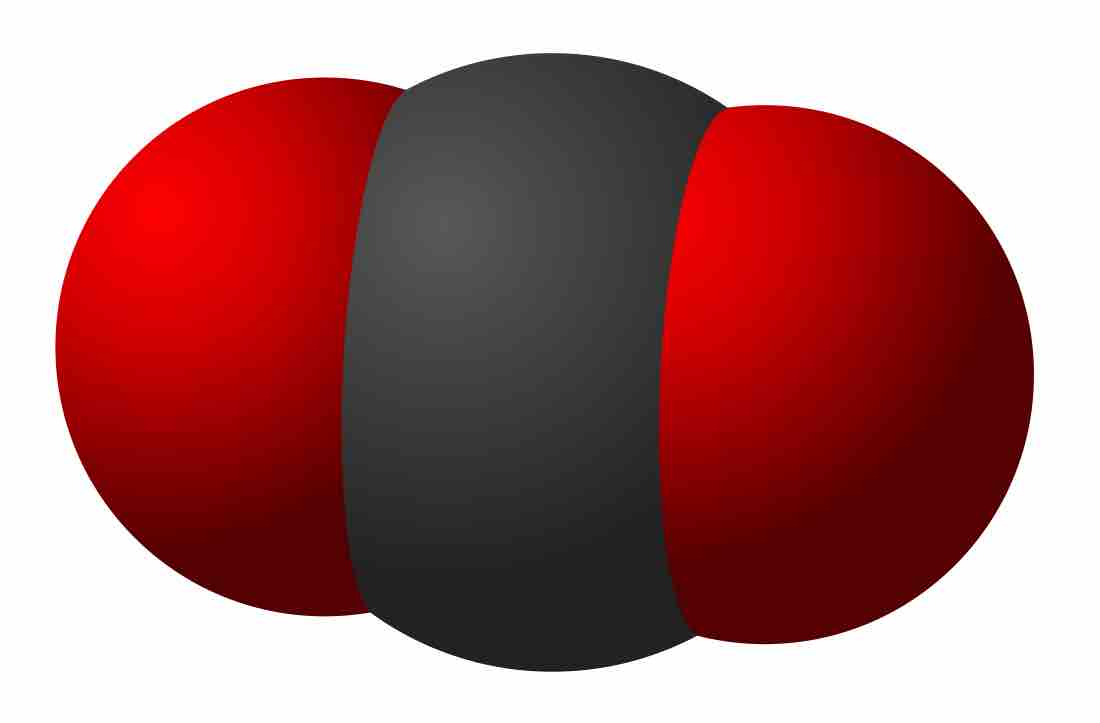Carbon Monoxide v. Carbon Dioxide
Carbon monoxide (CO) and carbon dioxide (CO2) are both colorless, odorless gases.

Carbon monoxide
The space-filling model of carbon monoxide.

Carbon dioxide
The space-filling model of carbon monoxide.
Sources of Carbon Dioxide and Carbon Monoxide
Carbon dioxide and carbon monoxide are the products of combustion reactions, such as the burning of coal, wood, and natural gas, or the use of modern combustion engines (most frequently used in cars). When a hydrocarbon is burned in air, it produces carbon dioxide and water vapor. Carbon monoxide is often the product of incomplete combustion reactions. In the presence of adequate oxygen, combustion reactions will usually produce carbon dioxide. Most carbon dioxide found indoors is a result of human activity and exhalation. Carbon dioxide is also produced during cellular respiration, when humans turn glucose and oxygen into energy, water, and carbon dioxide.
Health Effects
Carbon monoxide is highly toxic. In a number of countries, carbon monoxide is a major source of air poisoning. Carbon monoxide molecules compete with oxygen to bind to hemoglobin; as a result, not enough oxygen can bind to the hemoglobin. Furthermore, carbon monoxide molecules will not detach from hemoglobin, leaving them bound to the protein for long periods of time. When oxygen can no longer circulate in the bloodstream (because most or all of the body's hemoglobin are bound to carbon monoxide), nausea and faintness result, followed by organ failure and potentially death.
Carbon dioxide has few negative health effects relative to carbon monoxide; it has been linked to drowsiness in crowded buildings and is thought to impede education in overcrowded schools.
Prevention
Carbon monoxide is particularly dangerous because it is odorless; carbon monoxide sensors can be used to alert inhabitants to rising levels of this toxic gas, however. Bans on indoor smoking are also resulting in lower indoor levels of carbon monoxide. Proper air circulation is important to prevent the accumulation of this harmful gas. Ensuring the correct installation and ventilation of heaters, furnaces, and chimneys can also prevent the buildup of carbon monoxide. Older cars can also produce carbon monoxide. Leaving a car running in a closed garage can result in potentially lethal levels of carbon monoxide; more recently-built cars do not produce dangerous levels of carbon monoxide, however, even when in an inclosed space.